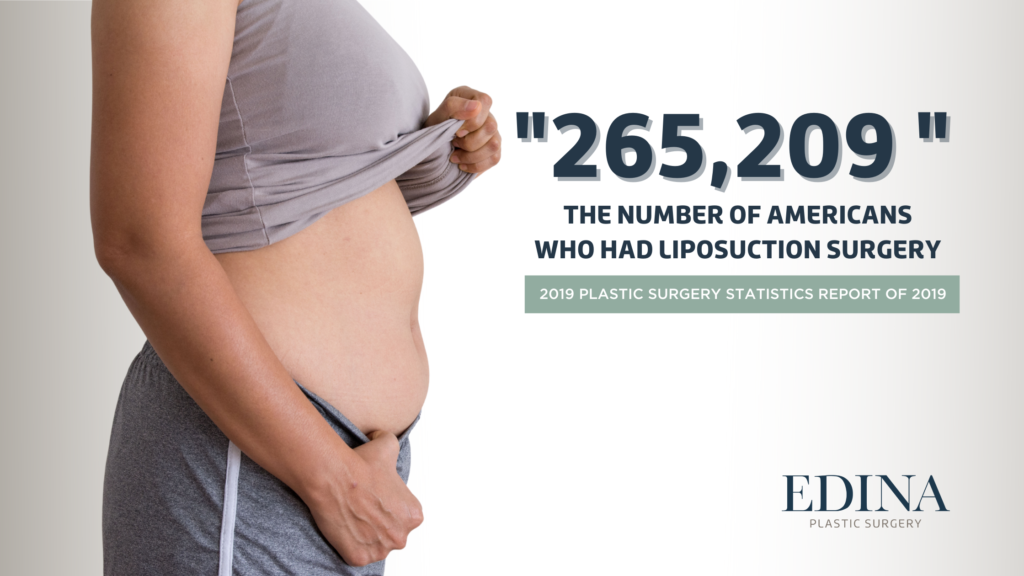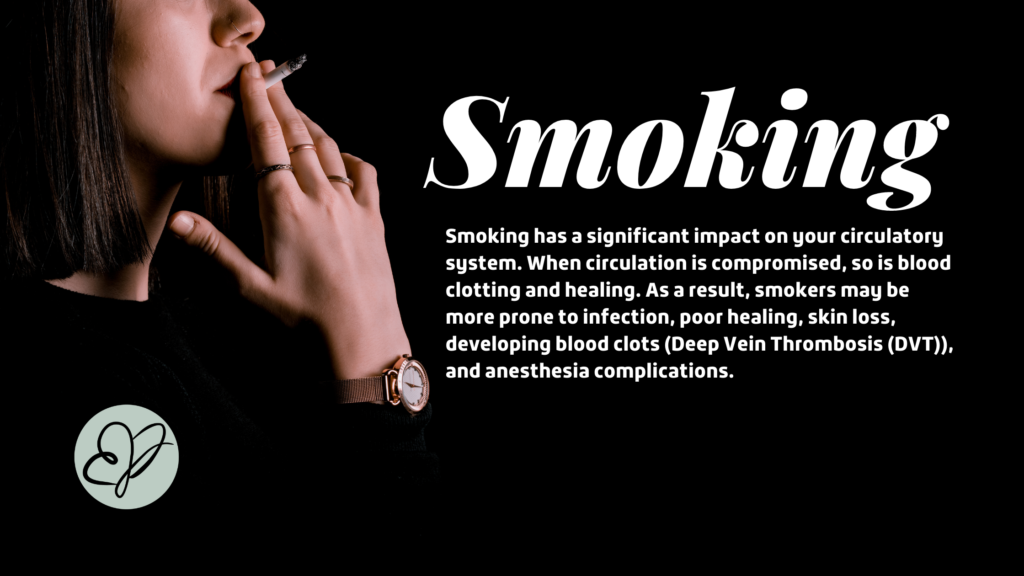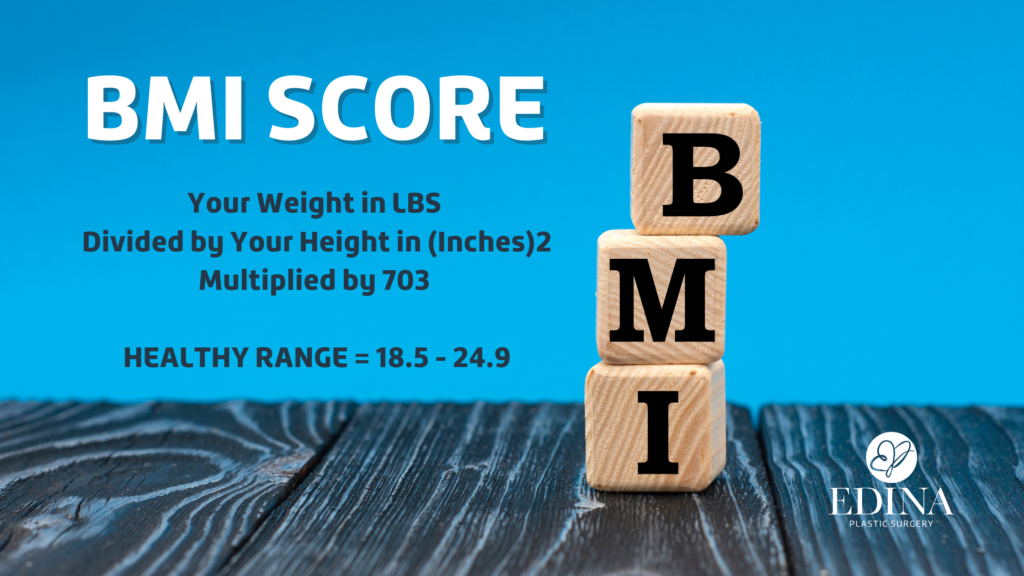The “battle of the bulge” is one many of us find ourselves on the front lines of at some point in life. Whether you struggle with abdominal fat that just won’t budge with diet and exercise, or you can thank your genetics for a double chin that makes you appear heavier than what the scale reads, Liposuction Surgery may be an effective solution. By removing stubborn pockets of fat on areas like the abdomen, thighs, flanks, and arms, Liposuction can reshape your body and confidence! But, having the desire for this procedure and the financial means are only two of the qualifications you’ll need to schedule Liposuction. Your surgeon will consider many other factors when determining if you are a good candidate for surgery. These include your skin health and quality, the amount of visceral fat you may have, current medications, your current diet/exercise regimen, and your expectations. Here are five reasons why your plastic surgeon may say “no” to you receiving Liposuction Surgery.

#1 – Your Physical Exam results disqualify you for surgery.
Any reputable surgeon will require the results of a pre-op exam or physical to clear you for surgery. He or she will use these results to ensure that a procedure, like Liposuction, is safe for you to receive based on your current health.
Many surgeons rely on the American Society of Anesthesiologists grading system to determine if a patient is cleared for surgery, and some only operate on CLASS I, II patients.
- CLASS I – Someone who is perfectly healthy based on their physical exam results.
- CLASS II – Someone who has mild systemic issues but may still be a good candidate for surgery. An example would be a patient who has elevated blood pressure that is controlled through medication.
Beyond the first two classes are patients who may have poorly controlled diabetes, have experienced chest pain with exertion in the past, or are on blood-thinning medications. All of these factors put you at much higher risk of having complications with Liposuction, and almost any surgery for that matter.
Additionally, previous surgery in an area may be a reason for further testing prior to Liposuction, especially open abdominal surgery. A complication of open abdominal surgery can be development of a hernia or bulge over time. Presence of a hernia can make it unsafe to perform Liposuction because of the increased likelihood of entering the abdominal cavity during your procedure. Your surgeon will examine you for hernias and may recommend additional imaging prior to surgery if your exam is unclear.
#2 – You’re a smoker.
If you are a smoker, you may not qualify for surgery. It doesn’t matter if you’re a pack a day smoker, someone who prefers vaping, or you’re a recreational marijuana user. Any of these will cause your surgeon to put you in a higher risk category for Liposuction. Why? Smoking has a significant impact on your circulatory system. When circulation is compromised, so is blood clotting and healing. As a result, smokers may be more prone to infection, poor healing, skin loss, development of blood clots (Deep Vein Thrombosis (DVT)), and anesthesia complications. If you are serious about getting Liposuction Surgery, you must quit smoking well in advance.

#3 – Your Body Mass Index (BMI) Score is out of range.
Although your BMI Score does not differentiate between muscle mass and fat, many surgeons still use it to assess a patient’s weight category. It is common for a plastic surgeon to limit Liposuction Surgery to patients below a BMI of 30-35. Ideal candidates for Liposuction are in good health and have a BMI under 30. Patients whose BMIs are 35 and up are far riskier to treat because there may be too much fat in an area to remove safely. Additionally, because the amount of fat is typically greater in a person with higher BMI, Liposuction is more likely to result in excess skin that does not contract with fat removal.
Liposuction should not be viewed as a method of weight loss. After your surgery, weight fluctuations can result in regaining of fat in areas that have already had Liposuction. Contrary to popular myth, Liposuction does not result in the propensity to gain fat easier in other areas, fat can always be regained in an area that has already been treated with Liposuction.

On the opposite end of the spectrum, a person who is too thin may be told “no” by their surgeon when it comes to scheduling Liposuction Surgery. If your surgeon can pinch the area to be treated, and it is less than two to three centimeters, you will have a higher risk of complications like indentations during Liposuction. In these cases, your surgeon may recommend a non-surgical procedure such as CoolSculpting®.
#4 – Your expectations are not realistic for the amount of fat that can be removed.
Body contouring with Liposuction and weight loss are two very different things. If your mid-section is thick due to visceral fat, or fat around your internal organs, Liposuction cannot address this. Only weight loss will. There are specific guidelines to the amount of fat your surgeon can safely remove during one Liposuction Surgery. When fat is removed, your surgeon is also removing surrounding blood, electrolytes, and fluids. This immediate loss can lead to a decrease in blood pressure and even shock. The higher the volume of fat removed, the higher the risk. For this reason, most surgeons will limit their “large volume” Liposuction Surgeries to 5,000ccs, or 5 liters of fat. This limit will vary state by state and country by country.
If you expect to have every area of your body treated with Liposuction during one surgery, be ready to hear “no” from your surgeon. Your safety will always be their top priority, and multiple sessions/surgeries may be recommended to achieve the outcome you desire.
#5 – Your skin quality is too loose, or you have cellulite.
Picture a fully blown up, smooth balloon. Now picture it with half of the air removed. It’s not as tight and smooth. The air in the balloon gave it structure, volume, and smoothness. When performing Liposuction, your surgeon is removing the fat under your skin. If the overlying skin is loose, crepey, or has cellulite, removing the underlying fat’s support could make it look worse – like that deflated balloon. Healthy skin is thick, firm, resilient, and elastic. If this is not your skin’s quality, your surgeon may advise against Liposuction alone as a treatment for an area. Most often in patients with poor skin quality, Liposuction needs to be combined with a skin excision procedure in order to obtain good results, such as abdominoplasty (tummy tuck) or brachioplasty (arm lift). You and your surgeon should have a discussion regarding the trade-off between doing Liposuction alone and accepting a less than perfect result in order to avoid larger scars.
Are you interested in reshaping your body with Liposuction Surgery? Schedule a complimentary consultation with an Edina Plastic Surgery surgeon by calling (612) 688-3177 or by CLICKING HERE.


